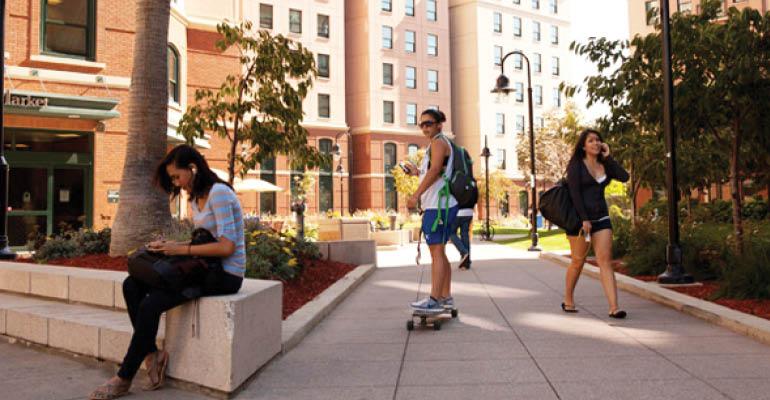Sponsored by JLL
By Sean Kane and Michael A. Morrone
Investors are diversifying their portfolios beyond the familiar urban construction developments that have driven multifamily sale volumes to new heights over the past two years. One perhaps unexpected area of focus has cropped up: student housing.
So just how interested are investors in student housing? Investment volumes in this space in 2016 increased 64.5 percent year-over-over compared to the 4.3 percent increase in the multifamily sector overall. While student housing has seen significant gains, it’s still only a small portion of the multifamily sector. In 2016, student housing accounted for 6.6 percent of total multifamily transaction volumes with a record $9.2 billion in activity.
As investor interest in student housing has increased, institutional capital has played a crucial role. Institutional investors accounted for nearly half of acquisitions in 2016.
Why is Student Housing Such a Good Bet?
Looking at the math, it’s clear why investors are enthusiastic about student housing. As millennials become the country’s largest living generation, university enrollment has shot up past 4.3 million.
National enrollment figures are expected to increase in both 2017 and 2018 compared to the current enrollment landscape, with the potential to add 100,000 or more students during that time frame. In addition to increasing enrollment, funding shortfalls across several states act as an additional driver of student housing solutions from the private sector.
Sunny Side Up
With so many students, supply has a ways to go to match demand.
A look at the numbers: 47,000 beds delivered in 2016 and an additional 43,800 beds are forecast for 2017. That’s down compared to 2013 and 2014, which saw respective annual deliveries of more than 60,000. Despite this supply, the 2017 occupancy rate is forecasted by Axiometrics to be 96.1 percent.
The current pipeline of new supply is concentrated in the Sunbelt. Four of the top five universities for forecasted deliveries are Florida State University, Texas A&M University, Texas Tech University and Arizona State University. Each of these schools have at least 4,000 beds in their respective pipelines, led by Florida State’s 7,900 beds. Annual effective rent growth has increased with new construction. Rents for privately owned student housing are expected to increase 2.9 percent in 2017. And that comes on the heels of a projected 2.9 percent gain in 2016 and a 3.6 percent gain in 2015.
Investing in the Investment of Human Capital
The tailwinds behind the market are strong, thanks in part to the evergreen emphasis on educational attainment. The numbers bare themselves out: In 2014, the median full-time worker over the age of 25 with a bachelor’s degree earned nearly 70.0 percent more than a similar worker with just a high school degree.
Consistent demand, stable net operating income and a favorable supply environment will continue to attract investors to student housing. College-age population growth and subsequent enrollments are expected to remain positive in coming years and balanced with larger labor market trends. However, there is reason to be cautious. As investor interest in the sector has increased, pricing has become competitive. Additionally, student housing affordability, the value of education and student debt have the potential to mute demand in some markets. Despite this, the underlying structure of the U.S. higher education system remains a leader globally, and alignment with best-in-class anchor institutions and local sponsors will remain critical to success.
Sean Kane is JLL’s national multifamily research manager. Michael A. Morrone is an investor research analyst with JLL. He has a Master’s in economics and policy analysis from DePaul University.
Learn more at: www.us.jll.com/united-states/en-us/research.

